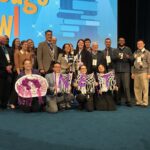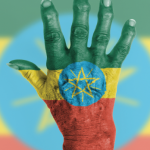Third suggestion: No vuvuzelas. Also, no air horns, whistles, or rattles. Not even kazoos.
Bring the Excitement to Rheumatology
While my World Cup fever cooled with the aspirin of American defeat, I nevertheless got an idea worth considering. I think that we should have World Cup of Rheumatology Research. Such a World Cup would be a good new thing.
For the World Cup of Rheumatology, each country would field top scientists to determine who is best in the fight against arthritis and autoimmunity. While national competition is stirring, I know that it is contrary to the current spirit of cooperation, where we have a multitude of League Against Rheumatism (LAR) organizations, public–private partnerships, collaborative research networks, and ACR–EULAR committees (or is it EULAR–ACR?) that produce guidelines and recommendations for the rest of the world.
Harmony rules today, the sharper barbs of nationalism seemingly cut away. While the progress engendered has been incredible, perhaps some competition on the global stage will energize our researchers, the young people especially. For America, which hates to be second best in anything, the prospects of competition could cause Congress to boost research spending to assure that we don’t fall behind the English, Dutch, or Germans. (I know I am leaving out many countries that do terrific work. My apologies, but space is limited.)
Just as they support Olympians, companies could chip in some dough to develop our youngsters, sending them to training camps and summer leagues, keeping Team USA well stocked for the future. With enough interest, the World Cup of Rheumatology Research might even make it to ESPN, generating lucrative TV contracts for our organizations. Deals to endorse beer, cars, or underwear for champion researchers could follow.
As a format, I suggest that each national team has five members who, having been escorted to the podium holding hands with cute little kids, present talks judged for creativity and importance by impartial referees (NOT FROM MALI!) who signal their scores by hoisting number cards like those in the figure skating or gymnastics. Ties would end with PowerPoint shootouts, real mano a mano. Seeding would be based on the cumulative impact factor of publications for the past few years. To give emerging countries a shot at victory (as is done with the U.S. in the real World Cup), there can be some wild cards or preliminary rounds. Then the knockout round until only one team emerges champion and streets somewhere fill with cars raucously blaring horns as fans, draped in the flag of their country, do a jubilant conga, rumba, or jig.


